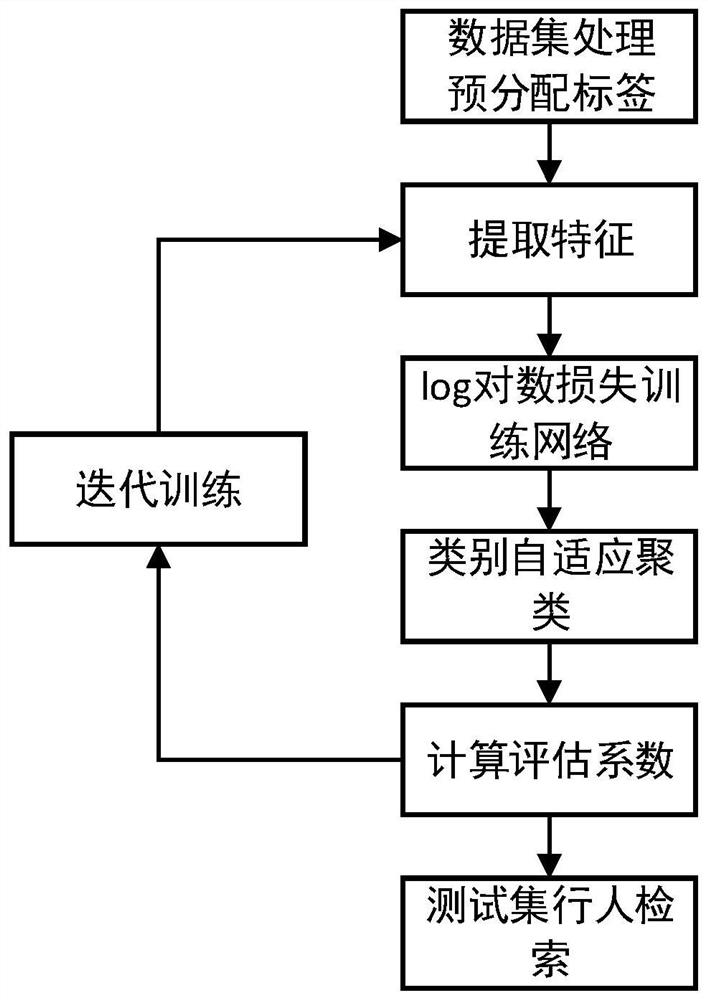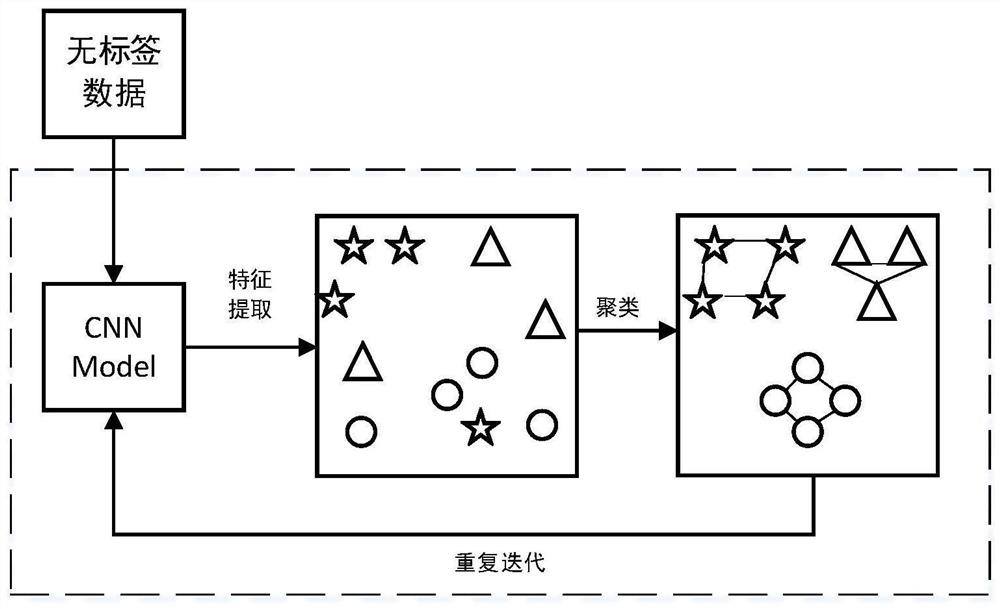Unsupervised pedestrian re-identification method based on category adaptive clustering
An adaptive clustering and pedestrian re-identification technology, applied in the field of pedestrian re-identification and computer vision, can solve the problems of difficulty in extracting discriminative features and low recognition accuracy, so as to improve the re-identification accuracy, reduce the iteration cycle, and improve the operation. The effect of efficiency
- Summary
- Abstract
- Description
- Claims
- Application Information
AI Technical Summary
Problems solved by technology
Method used
Image
Examples
Embodiment Construction
[0043] The present invention will be further described below in conjunction with the accompanying drawings and embodiments, and the present invention includes but not limited to the following embodiments.
[0044] Such as figure 1 As shown, the present invention provides an unsupervised pedestrian re-identification method based on category adaptive clustering, and its specific implementation process is as follows:
[0045] 1. Dataset processing and pre-allocation of labels
[0046] Divide the image set to be processed into a training set and a test set. Among them, the training set is the input to learn the parameters of the CNN network, and the test set is used for the test and evaluation of the final CNN network performance.
[0047] Taking the image serial number as the initial label, pre-allocate an initial label without pedestrian identity information for each image in the training set, and set the training set as X={x 1 ,x 2 ,...,x N}, x i Represents the i-th image...
PUM
 Login to View More
Login to View More Abstract
Description
Claims
Application Information
 Login to View More
Login to View More - R&D
- Intellectual Property
- Life Sciences
- Materials
- Tech Scout
- Unparalleled Data Quality
- Higher Quality Content
- 60% Fewer Hallucinations
Browse by: Latest US Patents, China's latest patents, Technical Efficacy Thesaurus, Application Domain, Technology Topic, Popular Technical Reports.
© 2025 PatSnap. All rights reserved.Legal|Privacy policy|Modern Slavery Act Transparency Statement|Sitemap|About US| Contact US: help@patsnap.com



